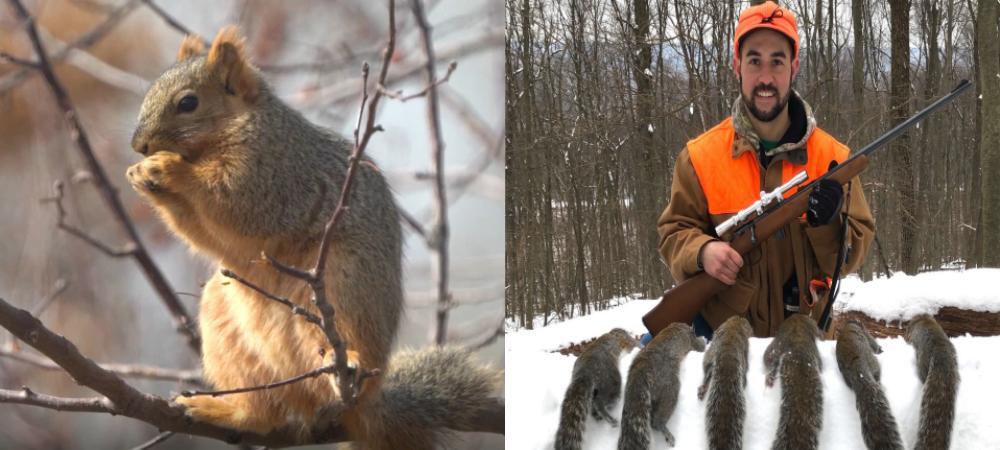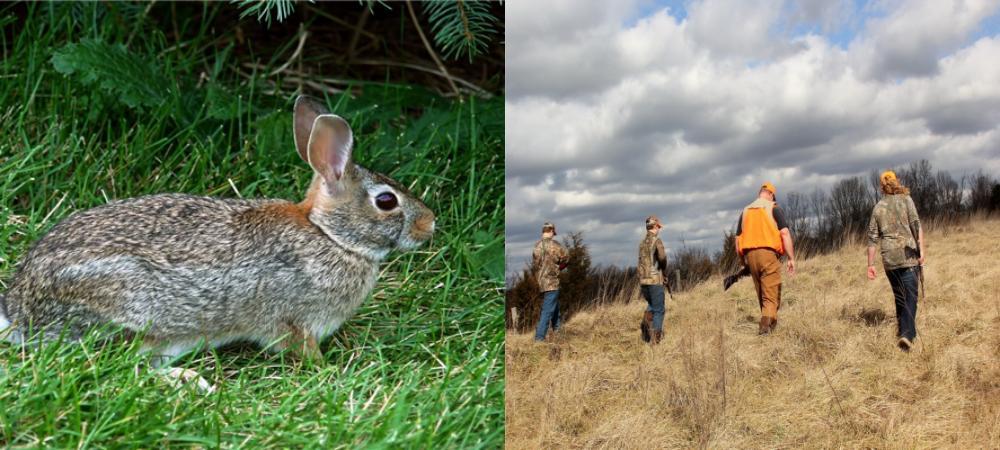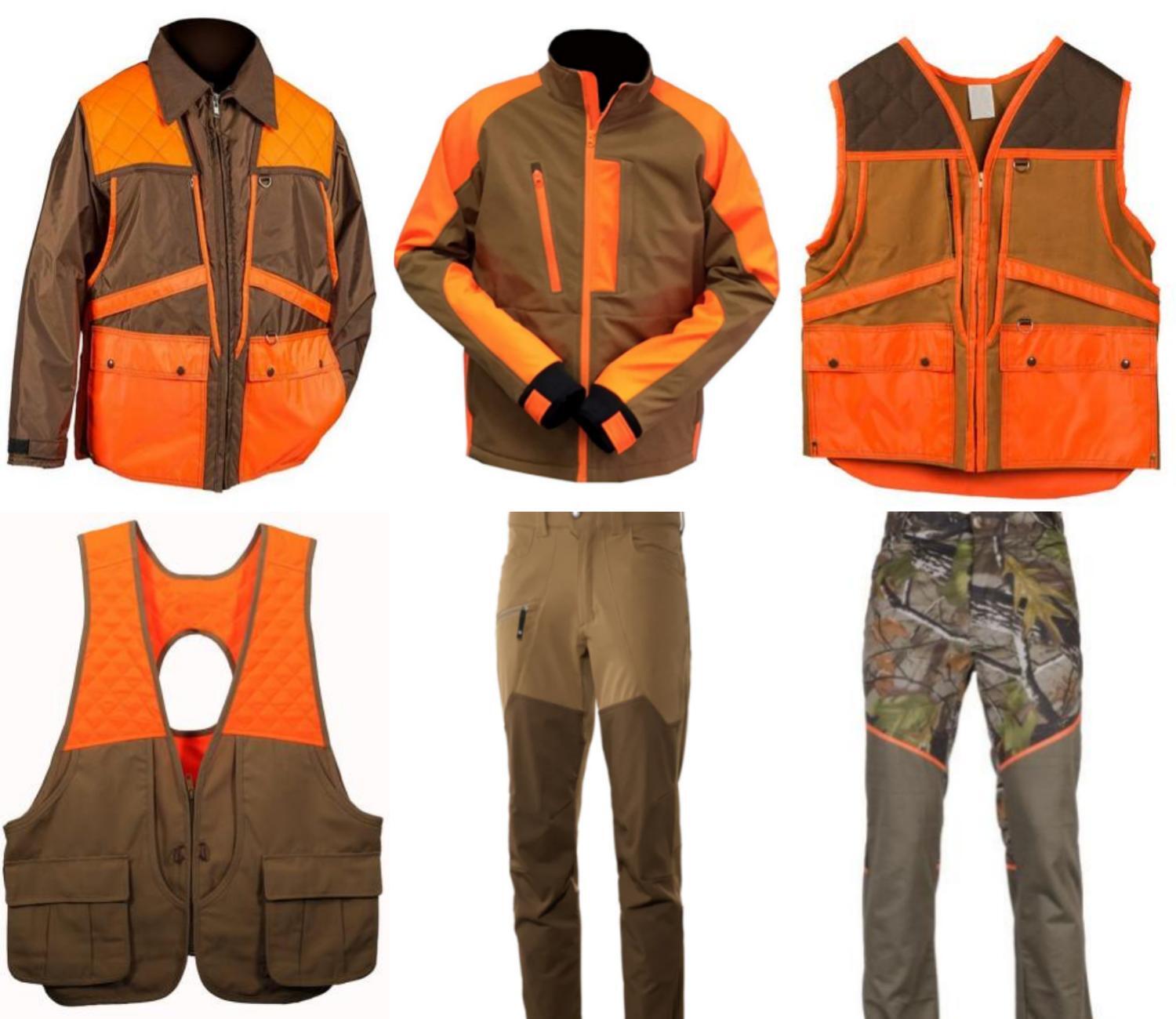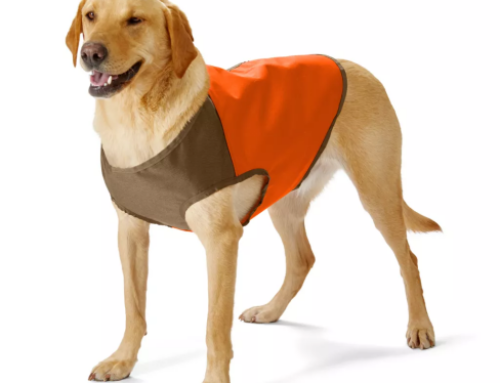You may be tempted to start hunting, imagining crisp autumn mornings deep in the woods, watching the sun shine through the trees, waiting for the perfect white-tailed deer to appear, dreaming of adding big game such as deer or wild turkey to your diet. But then you remember: you don’t know the first thing about hunting. You don’t even know where you can hunt, let alone how to scout or conduct humane shooting, and the prospect of learning the necessary skills and tactics can be so daunting that you drop the idea before taking the first step. Why not choose a simpler approach? Yes, that is start with small games.
“With small game there tends to be more action. It’s less intense. Less equipment is needed. It’s far more relaxed. And it’s easier to take the game out of the woods. You don’t need to drag it and do all this preparation.” said Walter “Deet” James, Jr., hunting specialist with the Education Division of the North Carolina Wildlife Resources Commission. Small game hunting was a genuinely respectable pastime in America, and most hunters enjoyed hunting for everything in a generalist manner rather than specializing in singular trophy pursuits. The U.S. National wildlife agencies typically classify the following as small game: squirrels, rabbits, hares, quails, pheasants, woodcocks, doves and grouse. Regarding Upland Bird Hunting types, As a professional hunting clothing manufacturer with more than 14 years of experience, Bowins has introduced the relevant knowledge and skills about upland bird hunting in previous articles, so let’s dive into the classic squirrel hunting and rabbit hunting today!
1.Squirrel Hunting
Squirrels are tree-dwellers that populate almost all areas of the continental United States. They occupy areas where food is abundant, such as densely wooded forests composed of hardwood trees such as ash, oak, and hickory. Squirrels eat hundreds of kinds of plants but are dependent on nuts. Their foods are available seasonally, which also affects the types of forest you will want to target throughout the year. In the early spring, squirrels feed on the buds of river birch, then to hickory nuts in late summer, and finally to the widely-known acorns and beech nuts in the fall. If obvious foods have been exhausted, hunt timber and hedgerows around row crop fields. The squirrels will venture out into the open to search for waste grain.
The best time of year for squirrel hunting is early- to mid-fall as they begin to stockpile food for the winter. Most states have long squirrel seasons, usually September through February. Squirrels are most active early in the day as they scavenge for food, with a lull in activity during the warmest part of the day. You may also find them foraging in the early afternoon right up until dusk.

Now that you know where and when to look for squirrels, let’s look at some tips for hunting squirrels:
Gather Your Gear. A few essential items include gun or bow, flashlight or headlamp (with spare batteries), binoculars, map and compass, knife, tissue, water, snacks, small first aid and fire kit and spare clothing. Note that some parks require squirrel hunters to wear high-visibility orange vests for safety reasons.
Listen and Look. You will need to use your ears more than your eyes when squirrel hunting. Squirrels make distinctive sound patterns that are easy to hear in a quiet environment such as chattering, scratching, and the sound of debris tumbling to the forest floor.
Be Quiet. Squirrels are skittish by nature, and loud noises will send them running back to their nests quickly. Tread carefully to avoid stepping on the stick and making too much noise.
Be Patient. If the woods suddenly go silent and still, it’s likely that the squirrels know that something or someone is nearby. In that case, pick a scheduled spot high on a ridge, sit quietly and wait for the activity to resume. Patience is the squirrel hunter’s greatest ally, so wait as long as you can. Fidgety, impatient hunters will see few squirrels!
2.Rabbits Hunting
Hunting wild rabbits is an excellent way for beginners to start hunting. To learn to hunt rabbits, you first need to know that there’s more than one kind of rabbit and not all should be hunted. The cottontail and the swamp rabbit typically make up the bulk of the bag for hunters, however, such as The Mexican Volcano Rabbits are extremely endangered and should never be harvested, though they look much like regular cottontail rabbits. It’s important that you learn to identify the appropriate varieties of rabbit you’ll be hunting, to keep your hunt legal and safe.
Rabbits are highly adaptable creatures that live along field edges as well as in the timber. You’ll find them in hollow logs, briar thickets, overgrown fence rows, brush piles, abandoned barnyards, home sites, junk piles, and old junked cars or trucks left out in the field.
Rabbits are abundant and rabbit hunting seasons around much of the United States typically take place from mid-November to the end of February. In some areas, such as California, Texas and some states, there is no closed season for them. Wild rabbits are most active early in the morning and just as the sun is setting. Like many animals, rabbits feed in minimal light, as the sun is going up or coming down, meaning that they’ll be most active at those times.

Hunting Tips For Rabbits
Get a hunting license. Rabbit hunters need to be licensed with the state in which they’re hunting. Usually, this can be done by applying online with the Department of Wildlife, or the Department of Fish and Game. In some areas, you might need to pass a hunting safety or a gun safety course or a quiz before being awarded a license to hunt rabbits.
Look for the Rabbits Eyes. Cottontails and other rabbits are extremely well camouflaged. Old hands at this endeavor have a rule: look for their eyes instead of their whole bodies. A rabbit’s round, dark eyes look out of place against the crisscross of cover, and are easily spotted by a hunter who walks slowly, carefully examining all brush and weeds.
Match your firearm to your prey. When you’re hunting small game, you need to match your weapon to your prey. Rabbits are commonly hunted with hunting rifles, shotguns, pistols, and even bow-and-arrow rigs. Most rabbit hunters go for a 20-gauge shotgun with an improved cylinder choke. Another popular choice for rabbits is a .22 rifle, great at a distance, and you can also try a 12- or a 16-gauge shotgun, using 5 to 7.5 shells. If you’re planning on eating your rabbits, use a shot that is non-lead to avoid potential lead-poisoning hazards.
Rabbit Hunting Dogs. For many rabbit hunters, the true joy of the hunt is watching and listening to beagles run rabbits. Diminutive and full of vigor and character, the tri-colored beagle has been used for small game hunting for nearly two hundred years. A scent hound, they possess one of the best noses in the canine world – the bloodhound is the indisputable leader of the pack when it comes to scenting abilities. That supreme scenting ability, combined with speed and agility, make beagles the top choice for rabbits, and their propensity to bark ensures that you’ll never lose track of their whereabouts.
Wear Protective Clothing. You’ll likely cover lots of ground throughout a day of hunting rabbits. Be sure to wear comfortable clothes, preferably in layers, to keep you prepared for any conditions. Most good cottontail thickets have one thing in common — thorns. Whether you’re hunting behind dogs, kicking up rabbits yourself or retrieving downed game, some type of sticker will be clawing at your ears, fingers, thighs and other tender parts. Wearing protective clothing can do wonders to make your trips afield more enjoyable and less painful. Also, safety should be the foremost consideration on all your rabbit hunts, make sure you round things out with an orange vest and hat so you’re visible to other hunters in your party.
Now the question is, where can you find cost-effective protective clothing? Do not worry! Bowins has the right gear for your small game hunting below:

Our small hunting clothing is often designed and fabricated with hi-vis orange color for safety. The shell fabric is usually made of durable polyester cotton and oxford fabrics, making it easier for hunters to move and shoot in rough places where briars and thorns thrive, and there is also mesh fabric inside to make the clothes more breathable. Different kinds pockets, such as chest, waist and big back cargo pocket, can supply more storage space. Durable YKK zippers are sturdy and easy to use. All of these features make our clothing ideal for small game hunting, so, if you also like or want to start small hunting games, come and contact us for more hunting clothing styles and hunting skills!

